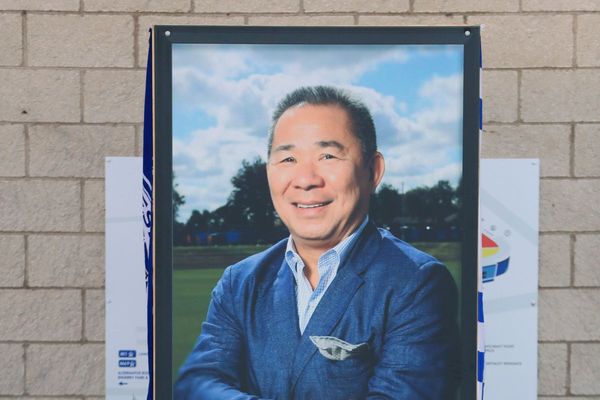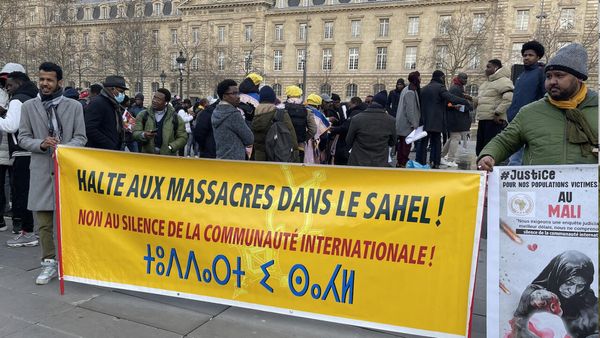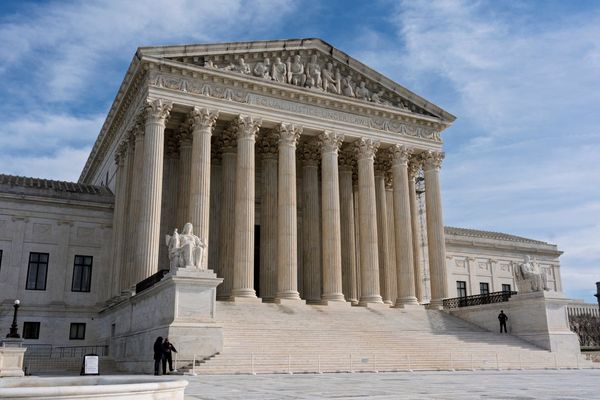
On Oct. 20, Secretary of State Mike Pompeo quietly entered into the Federal Register that the United States no longer recognized the Eastern Turkistan Islamic Movement (ETIM) as a “terrorist organization.” China, which portrays ETIM as part of the supposed Uighur terrorist threat that justifies its brutal crackdown in Xinjiang, immediately complained bitterly. Eighteen years ago, on Aug. 19, 2002, then-Deputy Secretary of State Richard Armitage designated ETIM as a terrorist organization in a similar manner. Despite being complete opposites, both moves were fundamentally similar; they were not motivated by ETIM’s reality but instead were largely about the U.S. position on other issues.
The reality of ETIM itself, and of the original listing, is complicated and political. As I explore in my recent book, no group ever called itself ETIM, but the name has become associated with a small group of Uighurs who came to Afghanistan in 1998 with the intent of launching a religiously inspired insurgency against Chinese rule. The leader of this group, Hasan Mahsum, traveled to both Saudi Arabia and Turkey after leaving China in late 1997 in an attempt to get the support of these countries’ respective Uighur diasporas for this plan, but he found little to no support. Nonetheless, he set out to Afghanistan with a handful of other Uighurs to realize his dream.
Mahsum was a religious nationalist inspired by indigenous anti-colonial Islamic ideas, but he was neither a Salafist nor a proponent of global jihadism. While in Afghanistan, he had strained relations with both al Qaeda and the Taliban. He met with Osama bin Laden at least once, but he could not convince bin Laden of the importance of the Uighur cause. The Taliban initially allowed his group to settle in Afghanistan, but they also fulfilled promises to China’s Ministry of Foreign Affairs not to allow the group to pose any threat to China. As a result, by 2000, Mahsum and a small group of like-minded Uighur refugees in the country were quarantined in Kabul, where the Taliban could watch and control their actions.
There is no evidence that this small under-resourced group ever instigated violence inside China or anywhere in the world. Its existence would have been a mostly unknown footnote in Uighur history were it not for the 9/11 attacks on the United States and the advent of what U.S. officials dubbed the “global war on terror.”
During the decade prior to the 9/11 attacks, the Chinese state had become increasingly concerned with the loyalty of its Uighur population, especially in the context of the dissolution of the Soviet Union along national lines. This led to state campaigns to find and neutralize Uighur so-called separatists, which became a label for any Uighur demonstrating national pride that could lead to calls for self-determination. At the same time, ideas about self-determination were growing in the region as Uighurs looked enviously at the newly established sovereignty of Central Asian peoples in the former Soviet Union.
At times, this growing tension between the state and its Uighur citizens even became violent as peaceful protests were met by state violence and growing police and security scrutiny of Uighurs resulted in spontaneous violent outbursts of retaliation and revenge. However, none of this violence showed signs of an organized violent resistance movement within the Uighur population or of connections to external militant groups.
At the same time, China was frustrated by criticism from the United States and Europe over its treatment of Uighurs and Tibetans, suspected of being a separatist threat that could lead China toward the fate of the Soviet Union.
In the frenzied Islamophobia that followed the U.S. declaration of the “war on terror,” the Chinese government saw an opportunity to alter the international perception of its treatment of Uighurs at least. If it could rebrand what it considered a threat of Uighur “separatism” as an international “terrorist threat,” it could effectively deflect international criticism of its repressive policies toward Uighurs by legitimizing them as part of the now internationally supported assault on Islamic terrorists.
As a result, almost immediately after the U.S. declared its new anti-terrorism focus, China began lobbying both at the United Nations and in its bilateral discussions with the United States and Europe to have Uighurs included in the ranks of populations linked with the international terrorist threat.
To support its claims, it produced a white paper outlining the threat posed by a nebulous umbrella group called the “Eastern Turkistan Terrorist Forces” that allegedly involved virtually every Uighur advocacy group in the world conspiring with al Qaeda and the Taliban. In a second white paper, Beijing asserted that this nebulous alliance of disparate forces was responsible for over 200 terrorist attacks during the 1990s in China, leading to 162 deaths and 440 serious injuries. In reality, almost all of these violent incidents were spontaneous clashes between Uighurs and the police or state security forces, not premeditated terrorist attacks.
Most other states, and most notably the United States, dismissed these claims. In October 2001, U.S. President George W. Bush stated at an Asia-Pacific Economic Cooperation summit that China should not use the “war on terrorism” as an “excuse to persecute minorities,” and U.S. State Department Coordinator for Counterterrorism Francis Taylor made similar comments while in Beijing to meet with Chinese counterparts in December of that year. In March 2002, Lorne Craner, then a U.S. assistant secretary of state, would be even more forceful in noting that China had “chosen to label all of those who advocate greater freedom in [Xinjiang], near as I can tell, as terrorists. And we don’t think that’s correct.”
However, by August 2002, U.S. receptiveness to China’s claims about a Uighur terrorist threat suddenly changed when Armitage entered into the Federal Register that one Uighur group, the virtually unknown ETIM, was in fact a terrorist organization. In doing so, it also claimed ETIM alone had been responsible for the over 200 terrorist attacks, 162 deaths, and 440 serious injuries during the 1990s that China had attributed to myriad Uighur groups. In September 2002, the United States also helped China in getting ETIM recognized on the U.N. Security Council’s important Consolidated List of terrorist organizations.
While the United States suggested that these actions were taken as a result of newly available intelligence information, it still refuses to publicly release the content or origins of that intelligence. Given the timing and the mistaken description of China’s already dubious claims as entirely ETIM’s work, this is very likely to have been an entirely political decision motivated by the desire of the United States to get the Beijing’s cooperation in its new military campaigns, and especially its acquiescence on the U.N. Security Council for the already planned U.S. invasion of Iraq not long after.
In the meantime, those associated with ETIM had fled Afghanistan during the U.S. bombing. Some were killed in the bombing and others were sold by bounty hunters to the U.S. military and ended up in Guantánamo Bay. Mahsum and a handful of his followers fled to Pakistan, from where he called Radio Free Asia’s Uighur service in January 2002 to condemn the 9/11 attacks and to deny that his group had been assisted by either al Qaeda or the Taliban. In October 2003, Pakistani forces found Mahsum and killed him. His organization, if it can be called that, appears to have died with him, albeit that it lingered on many international terrorist lists.
Very little was heard about the phantom ETIM again until 2008 when an entirely different group, the Turkistan Islamic Party (TIP), threatened to attack the Beijing Olympics in an internet video. TIP claimed to have inherited the mantle of Mahsum’s group under a different name, an assertion welcomed by both Western terrorism analysts and the Chinese state, which could now claim that ETIM was alive and still dangerous. While TIP’s history is beyond the scope of this essay, it is important to note that there is no evidence that this group, while prolific internet video makers, has ever orchestrated violence inside China. But when conflated with ETIM, it has served as a useful justification for the state’s mass atrocities against the Uighur people in recent years.
While Pompeo’s recent action to delist the long-defunct ETIM as a terrorist organization is likely motivated more by the escalating U.S. conflict with China than by any new intelligence, it does remove a dark cloud that has hung over the long-suffering Uighur people since 2002. As such, it reminds me of the wishes of one Uighur former Guantánamo detainee I interviewed in Albania in 2012. He was 18 years old when he arrived in Afghanistan on Sept. 12, 2001, intending to travel overland to Turkey. On fleeing to Pakistan after the U.S. bombing began, he was captured and sold by bounty hunters, and was subsequently held at Guantánamo Bay for four years until he was absolved of being a terrorist. I asked him what he wanted from the American people for this mistake, and he answered that he only wanted an apology for what had happened to him. For now, Pompeo’s action, despite being imperfect and politically motivated, may be as close as he will get.







